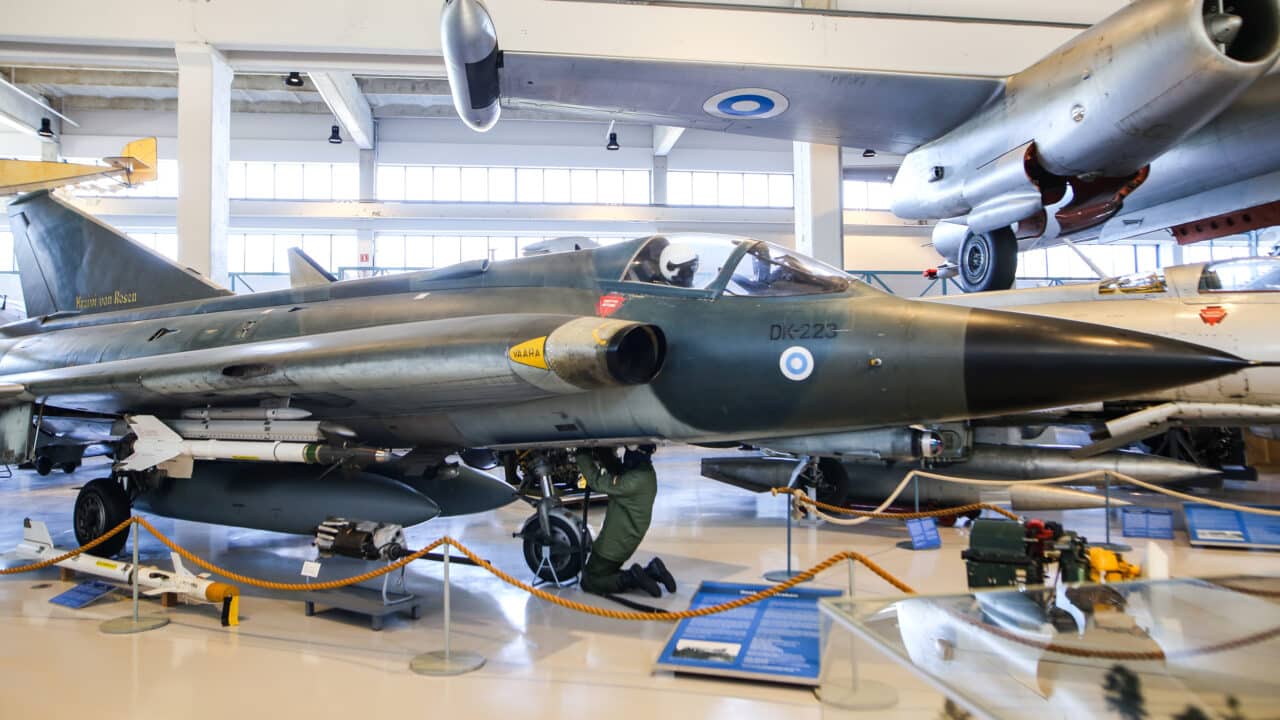The MiG-21F-13 is a Soviet single-seat clear-weather interceptor. Design work on the aircraft started in the mid-1950s based on Korean War experiences. A swept-wing and a delta-wing version were initially developed in parallel. Studies indicated that the delta wing provided better flight characteristics and manoeuvrability, and the development work eventually resulted in the MiG-21F. The first version to enter large-scale production was the MiG-21F-13. The number “13” in the designation comes from the aircraft’s K-13 infrared missile, which was a copy of the American AIM-9B Sidewinder.
Numerous versions of the MiG-21 were developed until the 1970s for operation by a large number of countries worldwide. The MiG-21F-13 was in production from 1960 to 1965. The Finnish Air Force had 22 MiG-21F-13s in service between 1963 and 1986. The acquisition process reputedly kicked off when the Soviet Union sent a note proposing military negotiations to Finland in 1961. It is thought that an underlying reason for the note was the Soviets’ concern about the weakness of Finnish air defence at the time. As a result, a Finnish military delegation travelled to Moscow, where MiG-21s and other armaments were offered to Finland. The first aircraft were delivered to Finland in April 1963.
The MiG-21 was a major step forward in Finnish military aviation. When it became available, the MiG-21F-13 was one of the world’s high-end interceptors.
Finnish pilots found the performance and flight characteristics of the MiG-21F-13 excellent. However, due to its technical features, the type aged quickly, and its cockpit ergonomics were far from optimal. The most significant factor limiting the type’s combat capability was the lack of an onboard radar. This deficiency was rectified in 1978 when the F-13 was replaced in Finnish service by the all-weather radar-equipped MiG-21bis. With the F-13’s maximum speed of about 2,400 km/h, the MiG-21 was the first and so far the only Air Force aircraft capable of exceeding twice the speed of sound. The museum’s MG-92 accumulated 1,107 hours of flight time.
Link copied!
Additional info
Operating time
1963–1986
Manufacturer
Mikojan-Gurevitš , Soviet Union.
Measurements
Wing pitch 7.15 m; Maximum speed c. 2,500 km/h (mach 2.05); Length 15.70 m; Altitude 4.10 m.
Type
Single-seat clear-weather interceptor
Object number
1917
Location
Main exhibition




